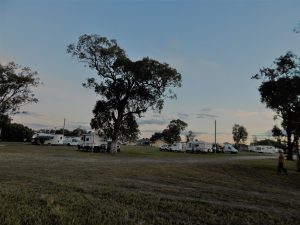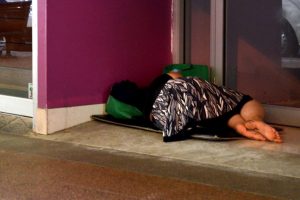
This topic was sparked by news from a near-neighbour who had received the dreaded ‘landlord requires vacant possession’ letter.
All tenants go into a lease today knowing that the landlord can decide to sell the property, at which point they will be evicted. A lot of landlords have been doing that over the last two years, taking a profit as property prices spiralled.
The rental vacancy figures in this town and just about everywhere else would suggest that once a rental property is sold, it disappears from the rental pool – at least for a while. The national rental vacancy is 1.2% – at a time when analysis of Census housing data suggests that 700,000 private dwellings are locked up and uninhabited. More on that later.
We all know people who are renting and finding it increasingly difficult to feed their families. In recent months, there have been many stories in the media about families struggling to find a place to live. Those who find themselves at the end of a lease with no new home in the pipeline are at risk of becoming homeless.
Even when we are told the reasons for the shortage of housing, solutions are less obvious. Mostly due to self-belief and a strong self-image, some people caught between a lapsing rental and a tight vacancy rate will find their way round it.
It isn’t hard to find caravan parks, farm-stays and outback tourism ventures that need residential caretakers. The successful candidates get to park their vans for free and quite possibly pick up a small stipend as well.
People in these circumstances (a) do not regard themselves as homeless and (b) they can enjoy the luxuries afforded by a 22 ft caravan and an annexe.
June quarter data from CoreLogic shows that Australia’s rental market continues to tighten as low supply levels cause national vacancy rates to dive. Rents continued to rise across all capital cities and property types over the past three months.
Dwelling rents in the June quarter were 9.1% higher across the capital cities and up 10.8% in regional areas, compared to June 2021.
CoreLogic report author Kaytlin Ezzy said the recent upwards trend in rents has occurred mostly in the absence of overseas migration.
“This sustained period of strong rental growth has seen national dwellings record the highest annual growth in rental values since December 2008, when rental demand was supported by record levels of international migration,” Ms Ezzy said.
Vacancy rates across national dwellings fell to a record low of 1.2%, down from 2.2% this time last year.
In March, CoreLogic contributed to a report in The Guardian that found rents in Queensland had risen by as much as $200 a week over the previous two years.
The report found that steep rent rises in parts of Queensland forced people into caravans, sheds and poverty – even before widespread flooding displaced thousands more people.
While the ABS has released 2021 Census housing data, it will be “early to mid-2023” until we see the homelessness data. The most recent official data was collected in 2016 and released a year later. The homeless tally then was 116,427.
The Australian Institute of Health and Welfare (AIHW) estimates that in 2020–21, around 278,300 people received assistance from Specialised Homelessness Services (SHS). Around 111,100 clients were homeless when they first began support.
There are different categories of homelessness, apart from those who literally have nowhere to go and end up sleeping rough or in a charitable shelter. Then there are people living in sheds, garages and other unconventional buildings, couch surfing (staying with friends), hostels and unsuitable temporary accommodation.
Since late 2019, the onset of the Covid pandemic, the escalating price of real estate and an ever-increasing scarcity of rental properties has unquestionably added more individuals and families to the homeless tally. There is an increasing cohort of ‘hidden homeless’, that is people who are either not eligible to apply for support or feel they do not need it.
In Australia, some of these people head for the great outdoors. Accommodation demand driven by ‘Grey Nomads’ has produced hundreds of free camps and low-priced camp-grounds run by local show societies. The free roadside reserves, which may nor may not have a toilet/and or shower, usually have rules about how long you can stay. In Tasmania, many free camps allow you to stay for up to a month.
.Everyone’s circumstances are different, but we have met many people who had sold their house and bought a road rig. Many of the so-called Grey Nomads are retired tradies and public servants who can afford a $200,000 self-contained rig and go on the road for months at a time.
But if you travel the country and stay in free camps, you are just as likely to see a couple living in a 30-year-old caravan towed by an equally ancient car.
The big problem waiting for Australia’s new Prime Minister to tackle (after he has settled down our Pacific neighbours), is the housing crisis.
Believe me – it is a crisis. There are simply not enough houses to go around. This is particularly so in Queensland, where interstate migration has put the housing sector under massive strain.
There are reasons for the dire shortage of housing and they include delays in building new homes amid adverse weather in 2022. Then there are homes destroyed by floods or bushfires.
But as residential property analyst Michael Matusik discovered, the housing shortage is in part due to some 700,000 private dwellings that are “deliberately left vacant”.
Matusik reached this conclusion after analysing 2021 Census housing data, which showed there were one million unoccupied dwellings in Australia (about 10% of the country’s private residential accommodation).
The ABS defines unoccupied dwellings as: holiday homes (for owner’s use or rented out); investment properties without a tenant; newly built but vacant dwellings; habitable dwellings being renovated and/or vacant dwellings for sale or lease.
Matusik wrestled with those categories and calculated that after discounting the latter, 700,000 unoccupied dwellings were investment properties that were locked up rather than tenanted.
“Many of the unoccupied dwellings are in capital cities, especially Sydney and Melbourne where more apartments are in the dwelling mix,” Matusik wrote in his regular subscriber bulletin, Matusik Missive. “In these cities the proportion of overseas buyers, especially from Asia, and particularly from China, is the highest in the country.
“It is somewhat safe to say that something like 70% of the unoccupied dwellings across Australia are deliberately locked up.
“Assuming past immigration levels return, then there is a need to build some 150,000 new dwellings across Australia each year.
“If we could unlock these 700,000 empty homes, we would not need to build a new home for 4.5 years.”
While admitting this is ‘fantasy land’, Matusik says that any move to open up these dwellings would go a long way to improving short-term dwelling supply.
As we approach National Homelessness Week (August 1-7), some agencies will no doubt be calling for an earlier release of Census data on the homeless.
I asked the peak body, Homelessness Australia, for a comment; but remembered it was de-funded by the Federal Government in 2014. When one of their volunteers gets back to me, I’ll include their comment.
For now I’ll say that however bad the news is, it is better that we know sooner than later.





